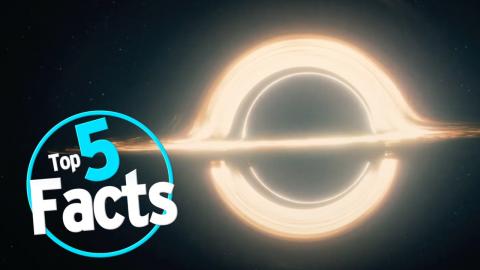Top 5 Facts about Black Holes

From awe-inspiring supernovas to the tiny dwarf planets -- sorry Pluto! -- the universe is full of natural wonders. Welcome to WatchMojo's Top 5 Facts. In this instalment, we're going to delve deeper into the unknown than any man has (or could) before and count down the five most astonishing things you didn't know about black holes.
Special thanks to our users ninou78, nifaseeh and ViolaCello for submitting the idea using our interactive suggestion tool at http://www.WatchMojo.comsuggest
WM Facts: Top 5 Facts: Black Holes
From awe-inspiring supernovas to the tiny dwarf planets -- sorry Pluto! -- the universe is full of natural wonders. Welcome to WatchMojo’s Top 5 Facts. In this instalment, we’re going to delve deeper into the unknown than any man has (or could) before and count down the five most astonishing things you didn’t know about black holes.
Though black holes have a gravitational force so strong that light can’t escape them, black holes burn astoundingly bright. In fact, astronomers believe that quasars -- the brightest objects in the universe -- may actually be the result of supermassive black holes. This is due to something called an accretion disk which is all the hot gas and dust that swirls around a black hole as it swallows stars. When matter falls into a black hole, it travels faster and faster which releases energy in the form of intense heat and light as it collides with other matter. Earlier this year, astronomers identified a new black hole which shines 429 trillion times brighter than our own Sun and may be nearly 13 billion years old.
Stephen Hawking may be one of the most highly-regarded thinkers of our time, but don’t take him to Vegas. His string of gambles began in 1975 when he bet fellow astronomer Kip Thorne that a celestial body known as Cygnus X-1 wasn’t a black hole. Over two decades later, in 1998, Hawking conceded defeat and bought Thorne a year subscription to Penthouse. Perhaps realizing his impending loss, Hawking joined forces with Thorne and doubled down on another bet in 1997 against John Preskill. Hawking wagered that once matter fell into a black hole that any information about it would be lost forever, but in 2004 he admitted defeat once more. He made the official announcement that as black holes evaporate radiation it may be possible to recover information about what lies inside.
In February, scientists published their findings about J0100+2802 -- a black hole measured to be 12 billion times more massive than our own Sun -- and you thought your student debt was big! This monster black hole sits just a hop and a skip away -- 12.8 billion light years -- in the Pisces constellation. Not only is it large and old, but it’s one of the brightest things in the universe. It shines 40,000 times brighter than all of the stars in the Milky Way combined. Though not technically the largest black hole known, its age presents an interesting puzzle to astronomers. It dates to when the universe was a tender 875 million years old -- just 6% of its current age. Now they just need to figure out how it got so big so fast.
Black holes are located within our Milky Way galaxy, and with breakthroughs in space travel, falling into a black hole isn’t too far-fetched anymore. New research says that if you survived the fall -- you wouldn’t -- you might get stretched a little thin due to tidal forces. Though tides might conjure images in your mind of the Sun and Moon, black holes would have even stronger tidal forces. The average black hole is 20 times larger than our own Sun. The closer you are to a massive object like a star or black hole, the stronger you feel their gravity. If you fell feet-first into a black hole, they would be pulled down just a bit harder than your head. The result would be a spaghetti-like stretching that would rip your body apart. Yum!
In 2014, the black hole V4641 Sagitarii was measured a mere 20,000 light years away. When talking about the universe, the term light year gets thrown around a lot, but it’s actually a measure of distance. One light year is equivalent to roughly 9.5 trillion miles -- the distance light travels in one Earth year. Thinking about stopping by for a visit? Bring a book! The spacecraft New Horizons which made headlines earlier this year with stunning new photos of Pluto took nine years to get there traveling almost 40,000 miles per hour. At that speed, it would take almost 5.5 billion years to get to V4641 Sagitarii.
Did our list make you have a sudden hankering for spaghetti? Or are you just trying to get Stephen Hawking’s contact info to make a friendly wager? For more blindingly luminous top 10s and way-too-far-out-there top 5s, be sure to subscribe to WatchMojo.com.
